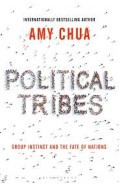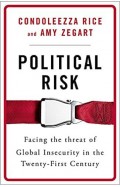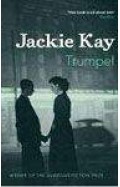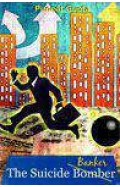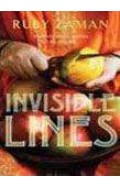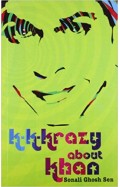Where Power Stops - (PB)
By: David Runciman
-
Rs 2,596.75
- Rs 3,995.00
- 35%
You save Rs 1,398.25.
Due to constant currency fluctuation, prices are subject to change with or without notice.
Lyndon Baines Johnson, Margaret Thatcher, Bill Clinton, Tony Blair, Barack Obama, Gordon Brown, Theresa May, and Donald Trump: each had different motivations, methods, and paths, but they all sought the highest office. And yet when they reached their goal, they often found that the power they had imagined was illusory. Their sweeping visions of reform faltered. They faced bureaucratic obstructions, but often the biggest obstruction was their own character.
However, their personalities could help them as much as hurt them. Arguably the most successful of them, LBJ showed little indication that he supported what he is best known for - the Civil Rights Act - but his grit, resolve, and brute political skill saw him bend Congress to his will.
David Runciman tackles the limitations of high office and how the personal histories of those who achieved the very pinnacles of power helped to define their successes and failures in office. These portraits show what characters are most effective in these offices. Could this be a blueprint for good and effective leadership in an age lacking good leaders?
Lyndon Baines Johnson, Margaret Thatcher, Bill Clinton, Tony Blair, Barack Obama, Gordon Brown, Theresa May, and Donald Trump: each had different motivations, methods, and paths, but they all sought the highest office. And yet when they reached their goal, they often found that the power they had imagined was illusory. Their sweeping visions of reform faltered. They faced bureaucratic obstructions, but often the biggest obstruction was their own character.
However, their personalities could help them as much as hurt them. Arguably the most successful of them, LBJ showed little indication that he supported what he is best known for - the Civil Rights Act - but his grit, resolve, and brute political skill saw him bend Congress to his will.
David Runciman tackles the limitations of high office and how the personal histories of those who achieved the very pinnacles of power helped to define their successes and failures in office. These portraits show what characters are most effective in these offices. Could this be a blueprint for good and effective leadership in an age lacking good leaders?
The Confidence Trap: A History of Democracy in Crisis from World War I to the Present
By: David Runciman
Rs 1,977.25 Rs 3,595.00 Ex Tax :Rs 1,977.25
Confronting Leviathan - A History of Ideas
By: David Runciman
Rs 2,245.50 Rs 2,495.00 Ex Tax :Rs 2,245.50
The Handover - How We Gave Control of Our Lives to Corporations, States and AIs
By: David Runciman
Rs 3,896.75 Rs 5,995.00 Ex Tax :Rs 3,896.75
The History of Ideas - Equality, Justice and Revolution
By: David Runciman
Rs 4,286.75 Rs 6,595.00 Ex Tax :Rs 4,286.75
Zubin Mehta: A Musical Journey (An Authorized Biography)
By: VOID - Bakhtiar K. Dadabhoy
Rs 472.50 Rs 1,050.00 Ex Tax :Rs 472.50
The Age of Surveillance Capitalism: The Fight for a Human Future at the New Frontier of Power
By: Professor Shoshana Zuboff
Rs 1,621.75 Rs 2,495.00 Ex Tax :Rs 1,621.75
The Bell Jar (50th Anniversary Edition)
By: Sylvia Plath
Rs 2,155.50 Rs 2,395.00 Ex Tax :Rs 2,155.50
Political Risk: How Businesses and Organizations Can Anticipate Global Insecurity
By: Condoleezza Rice
Rs 2,466.75 Rs 3,795.00 Ex Tax :Rs 2,466.75
Manning Up: How the Rise of Women Has Turned Men into Boys
By: Kay Hymowitz
Rs 646.75 Rs 995.00 Ex Tax :Rs 646.75
The Age of Surveillance Capitalism: The Fight for a Human Future at the New Frontier of Power
By: Professor Shoshana Zuboff
Rs 1,621.75 Rs 2,495.00 Ex Tax :Rs 1,621.75
The Bell Jar (50th Anniversary Edition)
By: Sylvia Plath
Rs 2,155.50 Rs 2,395.00 Ex Tax :Rs 2,155.50
Political Risk: How Businesses and Organizations Can Anticipate Global Insecurity
By: Condoleezza Rice
Rs 2,466.75 Rs 3,795.00 Ex Tax :Rs 2,466.75
No recently viewed books available at the moment.
Zubin Mehta: A Musical Journey (An Authorized Biography)
By: VOID - Bakhtiar K. Dadabhoy
Rs 472.50 Rs 1,050.00 Ex Tax :Rs 472.50
The Confidence Trap: A History of Democracy in Crisis from World War I to the Present
By: David Runciman
Rs 1,977.25 Rs 3,595.00 Ex Tax :Rs 1,977.25
Confronting Leviathan - A History of Ideas
By: David Runciman
Rs 2,245.50 Rs 2,495.00 Ex Tax :Rs 2,245.50
The Handover - How We Gave Control of Our Lives to Corporations, States and AIs
By: David Runciman
Rs 3,896.75 Rs 5,995.00 Ex Tax :Rs 3,896.75
The History of Ideas - Equality, Justice and Revolution
By: David Runciman
Rs 4,286.75 Rs 6,595.00 Ex Tax :Rs 4,286.75
The Age of Surveillance Capitalism: The Fight for a Human Future at the New Frontier of Power
By: Professor Shoshana Zuboff
Rs 1,621.75 Rs 2,495.00 Ex Tax :Rs 1,621.75
The Bell Jar (50th Anniversary Edition)
By: Sylvia Plath
Rs 2,155.50 Rs 2,395.00 Ex Tax :Rs 2,155.50
Political Risk: How Businesses and Organizations Can Anticipate Global Insecurity
By: Condoleezza Rice
Rs 2,466.75 Rs 3,795.00 Ex Tax :Rs 2,466.75












-313x487.jpg?q6)
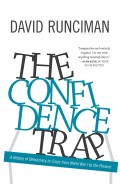
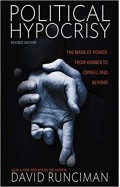
-120x187.jpg?q6)
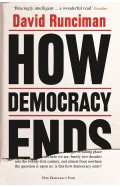
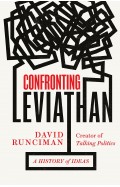
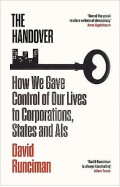


-120x187.jpg?q6)





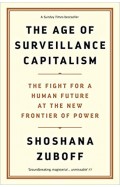
-Paperback-120x187.jpg?q6)
